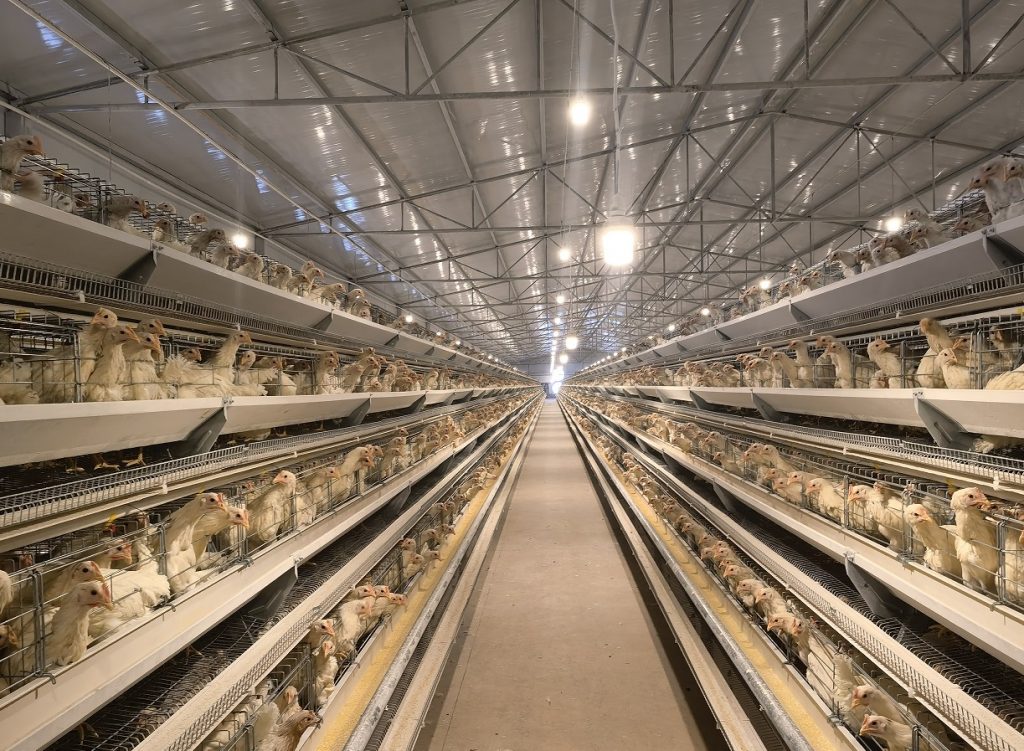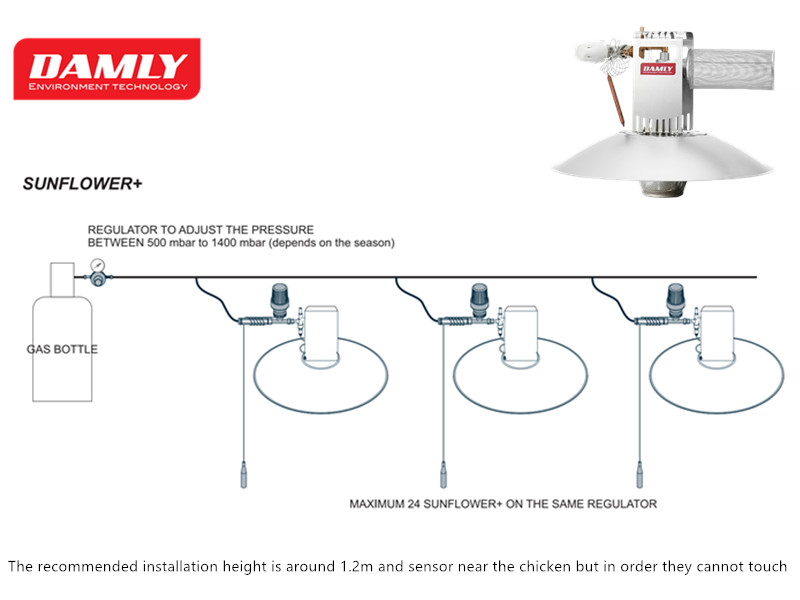Temperature in Poultry House

Temperature
Layers are warm blooded (homeothermic) within a certain range, their body temperature is quite constant. On average, the body temperature of birds is between 41°C and 42.2°C. Body temperature is kept quite constant and is regulated by part of the chicken brain (the hypophyse). It takes some time before heat regulating mechanisms start functioning in newborn chicks and therefore they need a higher ambient temperature than adult chickens do. Furthermore, the ratio between the surface area and weight of young chicks is unfavourable and they do not have any fat reserves.
Temperature Zones
The comfort zone is defined as the temperature zone in which the birds are able to keep their body temperature constant with minimum effort. This temperature zone also depends on the feeding level and housing conditions. Behaviour of birds will change when temperatures rise to above the comfort zone as they will start to pant and change their body position. When temperatures are below the comfort zone, birds will also change their body position and huddle together.
The thermoneutral zone is defined as the temperature zone in which the birds are able to keep their body temperature constant with the help of physical heat regulation . This temperature zone depends on feeding level and housing conditions of the birds and other factors. The lowest temperature in the thermoneutral zone is called the lowest critical temperature (LCT). If temperatures fall to under this temperature, the bird will start to use feed energy to warm itself (i.e. maintain its body temperature) and will consequently consume more feed. The highest temperature in the thermoneutral zone is called the highest critical temperature (HCT). If the temperature rises above this temperature the birds can no longer dissipate their heat. They will start to consume less feed and production will drop as a result.
When the ambient temperature is not within the thermoneutral zone the birds can:
Increase feed intake when the temperature is below thermoneutral zone.
Decrease feed intake when the temperature is above the thermoneutral zone.
Measurement of the Temperature
We need to use the thermometer to measure the temperature of the poultry house, so where to put the thermometer is very important.
The temperature in a house is not uniform and therefore, there are several places where the sensors should not be placed (i.e. it should not be hung close to the wall or behind something which hinders the air flow) and should not be hung too high in the house. Furthermore, the location of the air inlet and poultry heating equipment is important in determining the best position for the temperature sensor. It is best to place it as close to the chicks as possible and in such a way that the fresh air passes the sensor before it reaches the chicks.
If you’re using DAMLY Poultry infrared gas brooder SUNFLOWER DO-6500L+ which has its own thermostat and sensor, it’s recommended to put the sensor near the chicken but in order they cannot touch.

Recommended Temperatures for Layers and Broilers
The critical temperature for layers is 20°C. For every 1°C lower than 20°C, the birds require an extra 1.5 g of feed per day. The most efficient temperatures for layers are between 20 – 24°C. When temperatures rise above 24°C, shell quality and egg weight will reduce. The critical temperature for broilers and rearing birds is highly dependant on age.
Recommended temperatures for broilers
First day 32-34°C
1st week decrease to 30°C
2nd week decrease to 26°C
3rd week decrease to 22°C
4th week decrease to 20°C
Note: These temperatures are recommended temperatures and should be adapted to local situations as necessary.
